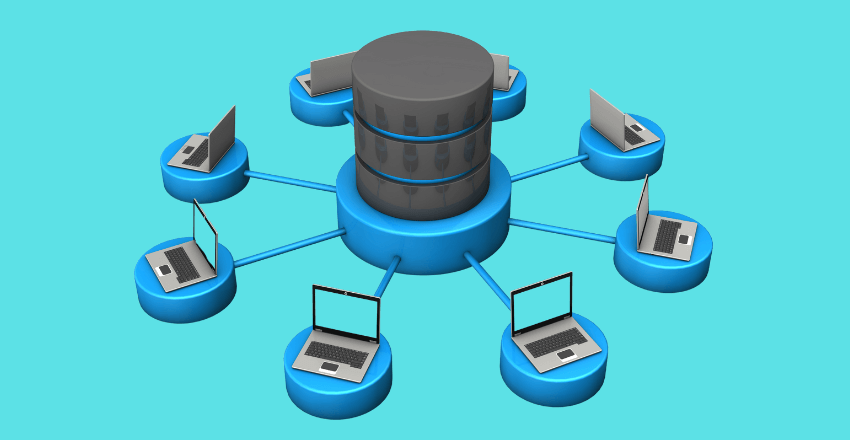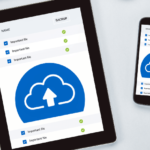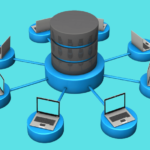
Image database creation transforms the way businesses harness visual data, unlocking unparalleled insights and innovation in today’s digital landscape.
Importance of Image Storage
Effective image storage is critical to efficiently managing large volumes of data. Images are essential components in modern-day business operations, whether they are product images, customer photos or advertising visuals. As businesses continue to embrace digitization, the demand for reliable image storage solutions increases.
Image storage systems allow you to store, categorize, and manage large volumes of image data, making it easier to locate images quickly and efficiently. By creating a centralized database of images, businesses can ensure all relevant stakeholders have access to the same up-to-date image assets.
This is where image storage comes in to play.
Through centralized image storage, businesses can achieve the following benefits:
- Efficient use of image data
- Seamless image sharing and collaboration
- Improved image organization and categorization
- Increased speed and accuracy
- Easy access to user-defined image attributes.
This helps to prevent version control problems, unnecessary duplication of data, and wasted effort. Moreover, by creating a single source of truth for image data, businesses can streamline their workflows and improve productivity.
To optimize image storage, businesses must consider factors such as scalability, security, and accessibility. Scalability is essential as image data is often subject to steep growth, security is essential as image data often contains sensitive information, and accessibility is essential since images must often be shared among different teams, departments, or even external parties.
Compiling Image Assets
Before creating an image database, it’s important to compile all of your image assets in one place. This includes images stored on local drives, network drives, cloud storage, and any other sources used by your organization. By centralizing all images in one location, you’ll be able to manage your assets more effectively and efficiently.
To compile your image assets, begin by identifying what images you have and where they are stored. This can be done manually, by searching through folders and drives, or by using automated tools that can scan your storage sources and create an inventory of your images.
Once you have a complete list of your image assets, you’ll need to organize them in a way that makes sense for your organization. This typically involves categorizing images based on factors like subject matter, file type, creation date, and other relevant metadata. You may also want to consider creating a hierarchical structure for your categories, to enable users to find images more easily.
When categorizing your images, it’s important to be consistent, clear, and concise. Make sure that all images are tagged with the appropriate metadata, and that the tags are standardized across all images. This will ensure that your images are easily searchable and retrievable.
It’s also important to keep your image assets up to date by regularly reviewing and updating your database. This means removing duplicate images, updating metadata, and adding new images as they become available.
Code Example
Here’s an example of Python code that uses the “os” library to compile a list of all image files in a directory:
import os
image_files = []
for root, dirs, files in os.walk("/path/to/images"):
for file in files:
if file.endswith(".jpg") or file.endswith(".png"): # add more extensions as needed
image_files.append(os.path.join(root, file))
print(image_files)This code scans the specified directory and its subdirectories for image files with the extensions “.jpg” and “.png”, and adds their file paths to a list. This list can then be used to import the images into your image database.
Categorizing Images

Compiling and organizing image assets is crucial to the success of image database creation. However, without a clear categorization system, your database can become cluttered and difficult to navigate, defeating the purpose of organizing your images. In this section, we will cover the importance of categorizing images and provide guidance on creating a hierarchical structure that is easy to use.
Why Categorizing Images is Important
Categorizing images not only helps users find the images they need quickly and easily, but it also helps maintain the integrity of the image database by preventing the addition of irrelevant or duplicate images. A well-defined categorization system ensures consistency in organizing images, making it easy to maintain and update the database as new images are added.
Creating a Hierarchical Structure
When creating a categorization system, it’s essential to start by defining the main categories or groups that your images belong to. These categories should be broad and general, such as product images, marketing materials, and customer photos. From there, you can create subcategories that are more specific, such as product images for a specific product line or customer photos from a particular event.
It’s important to keep your categorization system simple and straightforward, avoiding too many levels of subcategories. By keeping it simple, you make it easier for users to find what they need quickly. Additionally, it’s wise to establish naming conventions for your categories to ensure consistency in the database.
Using Metadata for Categorization
Metadata is data that describes information about the image, such as the date it was taken or the location where it was shot. It can also include keywords that describe the image, such as “beach,” “mountains,” or “cityscape.” Using metadata to categorize images can be incredibly effective for providing multiple ways for users to find the images they need. For example, an image of a person at the beach could be categorized as both “people” and “beach.”
When creating a metadata categorization system, it’s important to establish a consistent format for entering metadata. This will make it easier for users to search and find images based on specific keywords or attributes.
Utilizing metadata to categorize your images can also provide valuable insights into how users interact with your database, allowing you to optimize your categorization system for improved user experience.
Creating an Image Database

Once you have compiled your image assets, the next step is to create an image database. An image database allows you to store and organize your images efficiently, making it easier to access and manage your image collection.
Here are the steps to create an image database:
- Select the appropriate database software.
- Create a new database and name it.
- Define the key fields for storing information about each image, such as the image file name, date created, and photographer.
- Create a table to hold the image data.
- Populate the table with your image data using appropriate SQL scripts or data import mechanisms provided by your database software.
The process of creating an image database may vary depending on the database software you use and the specific needs of your organization. It’s essential to keep in mind the scalability of your image database, as it should be able to accommodate future growth and changes in your image collection.
As an example, let’s say you want to create an image database using MySQL. Here’s an example script to create a new database and a table to store your image data:
Here’s the SQL syntax you provided organized into a table format:
| Operation | Command |
|---|---|
| Create Database | CREATE DATABASE imagedb; |
| Use Database | USE imagedb; |
| Create Table | CREATE TABLE images (<br>id INT NOT NULL AUTO_INCREMENT PRIMARY KEY,<br>name VARCHAR(255) NOT NULL,<br>filepath VARCHAR(255) NOT NULL,<br>created_at TIMESTAMP DEFAULT CURRENT_TIMESTAMP,<br>updated_at TIMESTAMP DEFAULT CURRENT_TIMESTAMP ON UPDATE CURRENT_TIMESTAMP); |
This table breaks down the SQL syntax into distinct operations for clarity: creating a database, selecting that database for use, and creating a table within that database with specific fields and properties.
Once you have created your image database, the next step is to import your image data into the database.
Importing Images into the Database

Now that you have created your image database, the next step is to import your compiled image assets into the database. This process involves selecting the appropriate file format, setting up the database tables, and creating the necessary fields.
One option for importing images is to insert them manually into the database. This can be a laborious process, particularly if you have a large number of images. Alternatively, you can use the bulk importing feature provided by most database software. This feature allows you to import multiple images simultaneously, and can save you valuable time and effort.
When importing images, it is important to consider the file format. JPEG files are a popular choice for images as they provide high-quality, compressed images. However, if you require transparency or layers, then PNG files may be more suitable.
Before importing images into the database, make sure that the relevant fields and tables have been created. This ensures that the appropriate metadata can be captured and associated with each image in the database.
Here’s an example of how to bulk import images into the database:
| Action | Code Example |
|---|---|
| Create a table to store image metadata | CREATE TABLE image_metadata (image_id INT, image_name VARCHAR(255), image_file_type VARCHAR(255), image_size INT) |
| Create a table to store the actual images | CREATE TABLE images (id INT, image LONGBLOB) |
| Use the LOAD_FILE function to load images into the database | LOAD DATA INFILE ‘/path/to/images/*.jpg’ INTO TABLE images FIELDS TERMINATED BY ‘,’ LINES TERMINATED BY ‘\n’; |
By following these steps, you can successfully import your compiled image assets into the database, ensuring that the metadata is captured and associated with each image for optimal organization and retrieval.
Managing and Controlling Image Assets
One of the key benefits of creating an image database is that it provides centralized management and control over image assets. However, effective management and control require a thoughtful approach and careful implementation.
Here are some best practices for managing and controlling image assets in your database:
- Establish Access Controls: Limit access to the database to authorized personnel only, and define roles and permissions to regulate who can view, edit, or delete image assets. This approach ensures that users only have access to the image assets they need and provides an additional layer of security.
- Implement Versioning: Versioning allows you to keep track of the changes made to an image over time, allowing you to access previous versions if necessary. This feature is especially useful if multiple users are working on the same image, ensuring that everyone has access to the most up-to-date version.
- Tagging and Metadata: A good image database should have a standardized naming system for image files and be accompanied by relevant metadata. This helps to ensure that images are easily identifiable, searchable, and can be categorized and filtered more efficiently.
- Backup and Recovery: Regular backups of your database are essential to prevent data loss. Automated backups can be scheduled to run at regular intervals, and backups should be stored at a secure offsite location in case of a disaster.
- Regular Maintenance: Regular maintenance tasks such as indexing, query optimization, and defragmentation should be performed to ensure optimal database performance. These tasks can be scheduled to run automatically to minimize the impact on user productivity.
Implementing these best practices will help you manage and control your image assets more effectively, ensuring that your image database remains a valuable resource for your organization.
Optimizing Image Database Performance
Creating an efficient image database is only half the challenge, the other half is ensuring optimal performance. Slow and unresponsive image databases can cripple productivity and lead to data corruption. Here are some best practices to optimize the performance of your image database:
Optimize for Speed
Indexing is a key strategy for speeding up queries on large databases. Ensure that your database is indexed appropriately on relevant fields, such as image name, category, and date. Optimize queries by using joins instead of subqueries, and avoid using the SELECT * statement. Instead, specify which columns you need to return.
Another way to optimize performance is by partitioning large tables into smaller ones. By breaking down tables into smaller parts, the database can operate more efficiently and respond faster to queries.
Regular Maintenance
Regular maintenance is crucial for keeping your image database running smoothly. Set up a regular backup schedule to safeguard your data in case of system failure or user error. Perform regular checks to ensure that there are no data inconsistencies or errors. Keep your database software updated to take advantage of new features and security patches. Also, defragment your database regularly to prevent performance degradation.
Hardware Considerations
While optimizing database performance is essential, the hardware on which it runs should not be overlooked. Ensure that you’re using the best hardware available within your budget. Consider factors like processing speed and memory capacity when purchasing hardware. Configure your hardware to optimize database performance by adjusting RAM settings or modifying storage configurations. Consult with your IT team or database developer to ensure the hardware setup is optimized for your database performance needs.
Simplify Long Queries
Long queries can slow down the performance of your image database. Streamline your queries by simplifying them to make them more efficient. Consider breaking up long queries into smaller ones or adding indexes to improve their speed.
Creating and maintaining an efficient image database is essential for effective data management. The key to optimizing image database performance is to adopt best practices like regular maintenance, database optimization, and hardware considerations.
By implementing these best practices, you can ensure that your database runs efficiently, which can improve productivity, and reduce the risk of data corruption or loss.
Best Practices for Image Database Creation

Creating an efficient image database is not only essential for managing your image assets but also for streamlining your workflows. Follow these best practices to ensure that your image database is well-organized, secure, and optimized for performance.
Backup and Recovery
Make sure to back up your image database regularly, either manually or using an automated tool to prevent data loss in the event of system failure or corruption. Also, create a recovery plan that outlines the steps to follow to restore your database in case of a disaster.
Documentation
Documenting your image database is essential for maintaining its integrity and ensuring that relevant parties understand how to use and access the database. Create a detailed data dictionary that outlines the structure of your database, including tables, fields, and relationships, and make it accessible to your team members.
Scalability
Design your image database with future growth in mind. Ensure that you choose a scalable database software that can handle increases in data volume, user numbers, and other aspects that may change over time. Also, build your database in a modular fashion, with separate tables for different types of data, to facilitate future expansion.
Access Control
Implement access controls to restrict access to your image database to authorized users only. Ensure that each user has the necessary permissions to perform their duties within the database, while also limiting access to sensitive data.
Versioning
Implement versioning to enable effective collaboration within your team and maintain a record of changes made to your database over time. Use a version control system to track changes, including data modifications and schema changes, and ensure that each version is adequately documented.
Regular Maintenance
Regularly perform maintenance tasks on your image database to ensure its optimal performance. Tasks may include reindexing, updating statistics, monitoring performance metrics, and managing the database log file. Schedule these tasks regularly to ensure that your database remains responsive and efficient.
By following these best practices, you can create an image database that is well-structured, secure, and optimized for performance. If you require assistance with your database development project, contact HireSQL to work with skilled dedicated SQL database developers who can help you achieve your objectives.
External Resources
FAQ

FAQ 1: How do I ensure the uniqueness of image names in my image database?
Question: How can I prevent duplicate image names in my database to ensure each image is uniquely identifiable?
Answer: You can ensure the uniqueness of image names by adding a UNIQUE constraint to the name column in your images table. This enforces that all values in the name column must be unique, preventing duplicates.
Code Sample:
CREATE TABLE images (
id INT NOT NULL AUTO_INCREMENT PRIMARY KEY,
name VARCHAR(255) NOT NULL UNIQUE, -- UNIQUE constraint added here
filepath VARCHAR(255) NOT NULL,
created_at TIMESTAMP DEFAULT CURRENT_TIMESTAMP,
updated_at TIMESTAMP DEFAULT CURRENT_TIMESTAMP ON UPDATE CURRENT_TIMESTAMP
);Explanation: The UNIQUE constraint on the name column ensures that attempts to insert or update records with a duplicate image name will result in an error, maintaining data integrity and uniqueness.
FAQ 2: How can I automatically manage creation and update timestamps for my images?
Question: Is there a way to automate the tracking of when each image is added or modified in the database?
Answer: Yes, you can automate this by using the TIMESTAMP data type for created_at and updated_at columns, with default values and automatic updating enabled.
Code Sample:
CREATE TABLE images (
id INT NOT NULL AUTO_INCREMENT PRIMARY KEY,
name VARCHAR(255) NOT NULL,
filepath VARCHAR(255) NOT NULL,
created_at TIMESTAMP DEFAULT CURRENT_TIMESTAMP, -- Automatically captures creation time
updated_at TIMESTAMP DEFAULT CURRENT_TIMESTAMP ON UPDATE CURRENT_TIMESTAMP -- Automatically updates on record modification
);Explanation: The created_at column is set to capture the current timestamp when a new record is inserted. The updated_at column automatically updates its value to the current timestamp whenever an existing record is modified.
FAQ 3: How do I set up an auto-incrementing primary key for image records?
Question: What’s the best practice for creating a primary key for image records that automatically increments with each new entry?
Answer: The best practice is to use the AUTO_INCREMENT attribute with the primary key column, typically an id column. This ensures each new record has a unique identifier that increments automatically.
Code Sample:
CREATE TABLE images (
id INT NOT NULL AUTO_INCREMENT PRIMARY KEY, -- Auto-incrementing primary key
name VARCHAR(255) NOT NULL,
filepath VARCHAR(255) NOT NULL,
created_at TIMESTAMP DEFAULT CURRENT_TIMESTAMP,
updated_at TIMESTAMP DEFAULT CURRENT_TIMESTAMP ON UPDATE CURRENT_TIMESTAMP
);Explanation: The AUTO_INCREMENT attribute in the id column ensures that each new image record inserted into the database receives a unique identifier that increments sequentially, simplifying record tracking and referencing.







